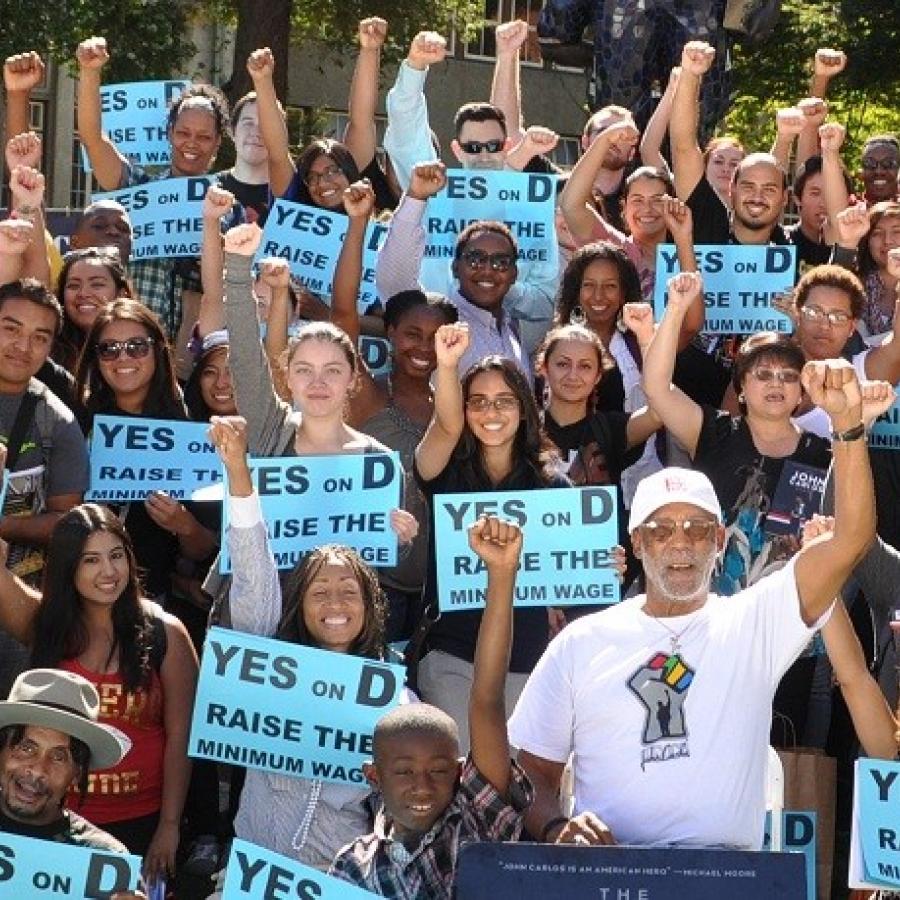Economic gains: Racial equity in income
- In 2020, the Nine-County Bay Area economy would have been $500 billion larger if there were no racial gaps in income.
- Among all people of color combined, average annual income would more than double under a racial equity in income scenario.
- For the Nine-County Bay Area Latinx, Black, and Pacific Islander earners would have the largest gains in average annual income with racial equity in income. Average annual income would have been about $74,700 higher for the Latinx population, $69,700 higher for the Black population and $69,300 higher for Pacific Islanders.
- San Francisco County would experience the largest percent gain in GDP (38 percent) with racial equity in income, whereas Marin County would experience the smallest percent gain in GDP (12 percent).
Historically, people of color were barred from educational opportunities that would allow them to obtain higher-paid employment, while occupations dominated by people of color (e.g., domestic and agricultural work), were excluded from minimum wage and overtime protections. Deindustrialization and cuts to the public sector decimated unions and disproportionately hurt people of color who were first to be laid-off and pushed into a growing service sector. Today, hiring and pay discrimination is widespread even among candidates with equal education and the loss of worker protections has created wealth for top earners as wages have declined for the bottom half. Opportunities for inclusion exist in industries driving economic growth (e.g., tech), but to date, these industries have lacked the racial diversity reflective of the region.
- Raise the floor on low-wage work by increasing the minimum wage or enacting living wage laws, requiring paid sick days, ending wage theft, strengthening workers’ rights to organize, and ensuring fair scheduling and equal pay.
- Target economic development to grow new good jobs.
- Investing in education and workforce training pathways.
- Dismantle barriers to employment such as conviction history questions on job applications, employer credit checks, and racial discrimination in hiring.
- Invest in programs to connect unemployed workers to employment opportunities.
- Increase transportation access to help jobseekers and low-wage workers connect to good jobs.
San Jose Raises Floor for Silicon Valley Workers

San José raises the floor for Silicon Valley workers. In 2012, a San José State University undergraduate class project turned into a successful ballot initiative to raise the minimum wage in the city to $10/hour, pegged to inflation. Local labor unions, community organizations, and business partners supported the effort, and the campaign helped build support for a statewide $10/hour minimum wage that passed the next year. Currently, the city’s minimum wage is $15.45/hour. San José also has one of the highest living wages in the state, at $24.07/hour (with health benefits), that adjusts annually based on increases in the cost of living in the city, and applies to all businesses that contract with the city. Learn more.
Friday, April 26, 2019 to Friday, April 26, 2019- Data: Insight Center Family Needs Calculator; Living Wage Calculator; Vital Signs: Jobs by Wage Level
- Reports: Insight Center: The Cost of Being Californian; Bad Credit Shouldn’t Block Employment; The Economic Impact of Local Living Wages; Wage Trends Show Increases for Low-Wage Jobs While Middle-Wage Job Growth Slows
Median earnings


